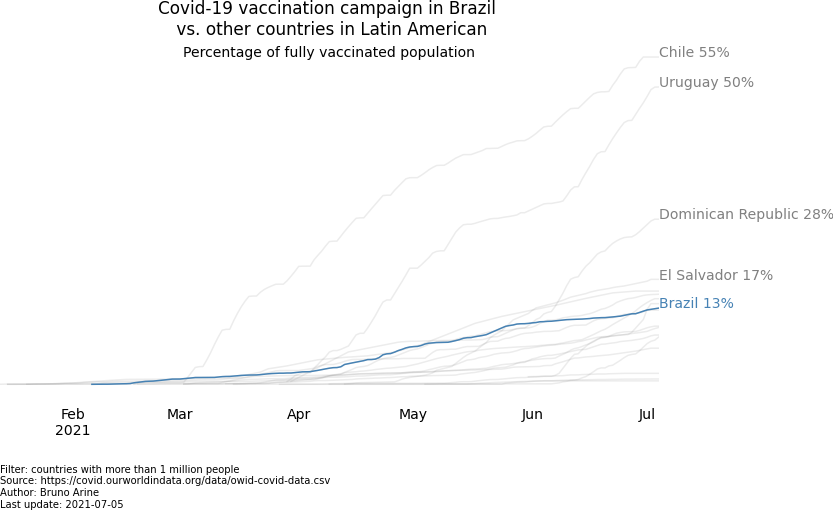Brazilian vaccination reports (or How to Lie With Numbers)
Recently, the Brazilian government boldly claimed through official channels that the country is the sixth most successful in terms of COVID-19 vaccination, ahead of Italy, France, and even Germany.

Figure 1: “Brazil stands out as the 6th country with more doses administered against COVID-19”, says an official announcement on the Brazilian government’s website.
However, numbers don’t always tell the truth. At least not the whole truth. It is true, for instance, that that Brazil has administered more vaccines in total than all the mentioned developed countries. But Brazil is huge—last time I checked, Brazil had more people than all those mentioned first-world countries combined. With that in mind, a figure of 8.8 million vaccinated people looks rather measly when compared to 200 million who are still at risk.
The gross number of vaccinated people can make the public administration look great in the headlines, but in relative numbers, Brazil stands at the 86th position in the world ranking, and 8th in Latin America. Only 13% of the Brazilian population has taken all the necessary doses for effective immunization. Chile, on the other hand, takes the lead in the continent with more than 50% of its population fully vaccinated.


Playing the devil’s advocate
The actual Brazilian numbers don’t look great when compared with its neighbors, but same-continent countries can have radically different economic situations. For example, if some of them have more resources to import doses of vaccines than others, we can end up comparing apples and mobile phones.
So, if geographic proximity is not a good criterion for comparing countries’ vaccination campaigns, economic proximity could be. By grouping countries according to their GDP per capita, we can get a better idea of how Brazil has performed in relation to its economical neighbors.
Now, when comparing Brazil with economically similar countries, it ends up taking the 10th place out of 30.


The graph above shows that Brazil is faring better than 68% of countries in the same group. Roughly speaking, not great, not terrible. Just meh.
Beyond the numbers
Would that information be sufficient to judge whether this is a good placement? We should be asking ourselves:
- Did these countries purchase vaccines in a timely fashion? (we didn’t)
- Did they get their vaccines at fair prices? (we didn’t);
- How are the diplomatic relations of these countries with the biggest vaccine exporters? (not so great);
- Is financial aid available for in-house manufacturing? (nope);
- Do these countries promote an appropriate vaccination campaign? Do their presidents affirm that the vaccine can turn people into crocodiles? (well…)
The code that generates these graphs, maps, and cluster analysis can be found on Github.